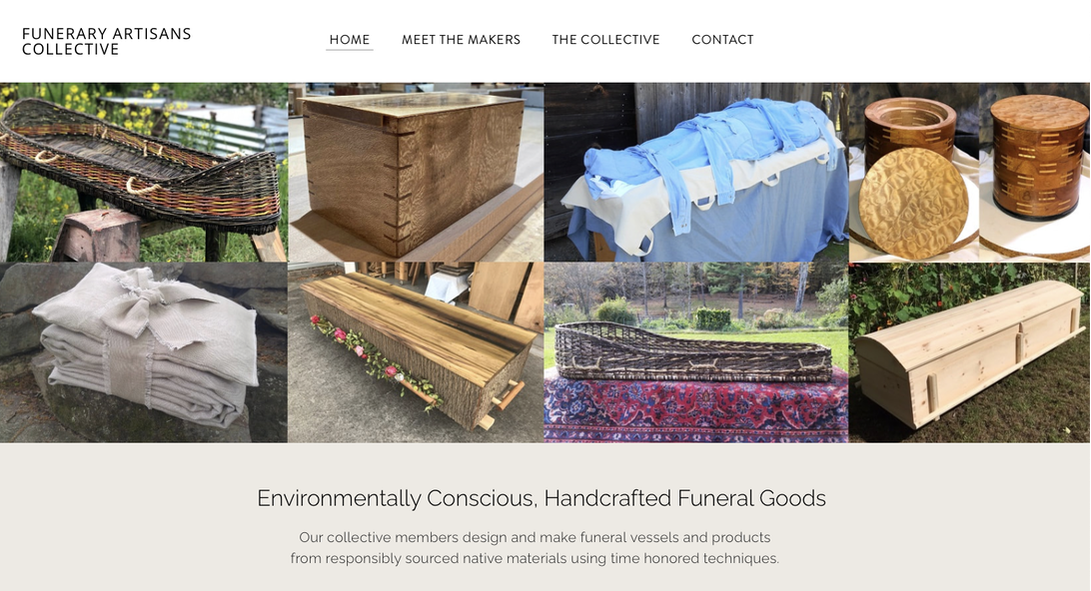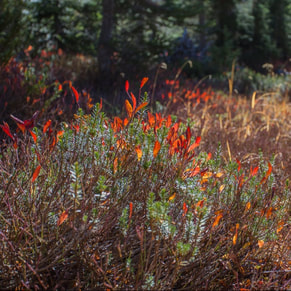Approaching Funerals With an Eco-Conscience
In the Pacific Northwest, many of us try to minimize our impact on the planet, but we may not know how to do so when it comes to decisions about dying and the disposition of our bodies. When faced with the task of finding an environmentally responsible final exit strategy, we may be thrust into a situation where the available choices don't match our values. New and old, methods of disposition and memorialization are changing to meet our increasing demand for affordable, eco-friendly, and meaningful practices. You may not be able to do it all, but even doing some contributes to the shift toward more sustainable funeral practices.
|
On This Page
|
Green Disposition Options
What to do with the deceased’s body after death? There are pros and cons, from an eco-friendly point of view, with both new and old disposition options, whether burial, cremation, or alternatives that are emerging. The Green Burial Council is a resource for more information regarding green burial options nationwide (see Green Burial Defined), and an emerging range of Other Disposition Options. (See How to Arrange Disposition for an overview of options presently available in Washington.)
Green Funeral Suggestions
Some ideas include:
For a range of green burial examples, read Heather’s Story, Mikaela’s Story, Jake’s Story and Karen’s Story. Read Briar’s Story to learn about her pioneering role in helping to create Natural Organic Reduction as a new option in Washington State.
Green Funeral Suggestions
Some ideas include:
- bathing the body using warm water and essential oils, such as lavender, instead of disinfecting chemicals.
- keeping or bringing the body home to be kept cool instead of using refrigeration units.
- cooling the body, if needed, with dry ice, Techni Ice™, air conditioning, fans, or open windows in winter instead of embalming chemicals or invasive procedures.
- biodegradable shroud or casket made of locally sourced, renewable materials.
- memorialization markers made of native stone or other locally-sourced materials.
For a range of green burial examples, read Heather’s Story, Mikaela’s Story, Jake’s Story and Karen’s Story. Read Briar’s Story to learn about her pioneering role in helping to create Natural Organic Reduction as a new option in Washington State.
Products
Containers for Cremation or Burial
The Federal Trade Commission’s “Funeral Rule” prohibits funeral homes or crematory operators from charging their clients any type of fee when the client procures a container from an outside source. Funeral goods, including cardboard caskets, pine boxes, urns, shrouds, and other containers are available online or for purchase at most funeral homes. You can also make caskets or shrouds yourself using plans or kits available online, or commission them from a local woodworker or seamstress.
Decoration (drawings, writing, other simple embellishments) of a plain or cardboard casket can be therapeutic for mourners, and acceptable to both crematories and cemeteries.
Crematories require that the body be cremated in a rigid, combustible container, whether a fancy casket, a simple pine or plywood box, or a cardboard “alternate container.” The container must have any precious items removed, and the body must be cleared of jewelry, pacemakers or other metal medical devices. If burying, ask the cemetery official what the casket requirements are, including whether natural (unembalmed) burial is permitted and whether a concrete vault is required by the cemetery by-laws.
Disposing of or Preserving Cremated Remains
There are easy-to-find biodegradable urns and other products on the market that contain the cremated remains for water or soil disposition. (For more information, read the cremation section of How to Arrange Disposition.)
Go to the Funerary Artisans Collective to find makers from all over the US and Canada.
The Federal Trade Commission’s “Funeral Rule” prohibits funeral homes or crematory operators from charging their clients any type of fee when the client procures a container from an outside source. Funeral goods, including cardboard caskets, pine boxes, urns, shrouds, and other containers are available online or for purchase at most funeral homes. You can also make caskets or shrouds yourself using plans or kits available online, or commission them from a local woodworker or seamstress.
Decoration (drawings, writing, other simple embellishments) of a plain or cardboard casket can be therapeutic for mourners, and acceptable to both crematories and cemeteries.
Crematories require that the body be cremated in a rigid, combustible container, whether a fancy casket, a simple pine or plywood box, or a cardboard “alternate container.” The container must have any precious items removed, and the body must be cleared of jewelry, pacemakers or other metal medical devices. If burying, ask the cemetery official what the casket requirements are, including whether natural (unembalmed) burial is permitted and whether a concrete vault is required by the cemetery by-laws.
Disposing of or Preserving Cremated Remains
There are easy-to-find biodegradable urns and other products on the market that contain the cremated remains for water or soil disposition. (For more information, read the cremation section of How to Arrange Disposition.)
Go to the Funerary Artisans Collective to find makers from all over the US and Canada.
Resources and Online Links
GBC Certified Product Providers
GBC Green Burial Defined
GBC Other Disposition Options
Funerary Artisans Collective
GBC Green Burial Defined
GBC Other Disposition Options
Funerary Artisans Collective
FCA = Funeral Consumer Alliance
GBC = Green Burial Council
NEDA = National End-of-Life Doula Alliance
NHFA = National Home Funeral Alliance
GBC = Green Burial Council
NEDA = National End-of-Life Doula Alliance
NHFA = National Home Funeral Alliance
Learn How To: |
Learn About: |
Washington Funeral Resources
and Education [email protected] Contact Landscape photos courtesy of Sean Proll Justin Craig All Rights Reserved |
Washington Funeral Resources and Education is a non-commercial public interest site dedicated to helping Washington consumers care for their own dead with or without the assistance of a funeral director. See FuneralPartnership.org for more state funeral information. This site is maintained as a project of White Eagle Memorial Preserve and Sacred Earth Foundation, which coordinates responses to inquiries with other Washington-based organizations and practitioners that support the mission of the Funeral Partnership.
Disclaimer:
This website has been created by volunteers making reasonable efforts to provide resources and materials for informational purposes only. Any information you obtain from this website is not legal advice and should not be relied upon without confirmation of current law. No warranties, expressed or implied, are made with respect to the information herein. There is no guarantee that the information contained here is complete or up-to-date as of the date that you view this site. The agencies linked via hyperlinks are responsible for the content of those sites. Their information is subject to change and should be consulted directly to ensure accurate and up-to-date information. Please report any inaccuracies to us in the form on the CONTACT page. Thank you!
This website has been created by volunteers making reasonable efforts to provide resources and materials for informational purposes only. Any information you obtain from this website is not legal advice and should not be relied upon without confirmation of current law. No warranties, expressed or implied, are made with respect to the information herein. There is no guarantee that the information contained here is complete or up-to-date as of the date that you view this site. The agencies linked via hyperlinks are responsible for the content of those sites. Their information is subject to change and should be consulted directly to ensure accurate and up-to-date information. Please report any inaccuracies to us in the form on the CONTACT page. Thank you!


